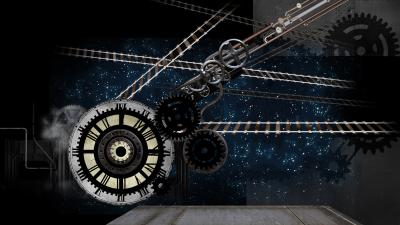So much about Antoine de Saint-Exupéry's popular book, The Little Prince, is embedded in the imaginations of generations of readers; everyone remembers the blue planet, the stars, and the golden-haired prince. The Little Prince on Broadway is an imaginative retelling of the story that includes circus-style aerials and a setting comprised of Marie Jumelin's stunning video design.
Since graduating from l’Ecole supérieure d’art appliquée in Lyon, Marie Jumelin has designed for productions as diverse as The Nutcracker in Rome and the Karl Lagerfeld's show during Milan's Fashion Week.
Live Design talked to Marie Jumelin about her work on this high-profile show.
Live Design: What attracted you to this project?
Marie Jumelin: The first thing that attracted me is that the project is led by Anne Tournié and Chris Mouron. We are really on the same page, artistically speaking. I knew that by working together we were going to accomplish great things. When they told me about the idea of The Little Prince, I was immediately very enthusiastic and inspired. We all read this book so the collective imagination around Little Prince is vast, I quickly had a lot images in mind.
LD: The Little Prince has a very famous aesthetic design. When you created this world did you consciously put your own stamp on it or deliberately reference what millions of people remember from reading the book?
MJ: Yes, everyone has in mind the little blue planet, the flowers and the stars, the expressive characters of the book. Saint Exupery's watercolors are both simple and full of life, they were obviously very inspiring in a desire to go to the essentials. In general, I tried to find this naive simplicity in the images of the show. Each painting is a mixture of realistic and abstract elements, this choice was born from the different degrees of reading of The Little Prince. There is a lot of double meaning between the real and the imaginary, that's what makes it accessible to all, children and adults alike. Graphically, I have therefore often used real elements which are disturbed by other wacky or improbable elements, floating buildings, trains which take off in the sky, rocks which take on human form...
LD: Where did you usually look for research and inspiration for your projects? Do you have a favorite library or museum?
MJ: I read a lot of comics that I buy or borrow from the library, graphic art in comics is vast, it goes from a simple line of pure representation to a really complex painted picture full of color. I love old illustrations, of nature, of architecture, the great paintings of the 18th and 19th centuries that you can see at the Musée d'Orsay, for example. The sources of inspiration can be very varied depending on the project, each case is unique.
LD: What software do you typically rely on to create your video designs?
MJ: I almost always start with Adobe Photoshop which is not a video software, but it's perfect for composing the images, choosing the colors, editing the layers of textures, creating the overall universe of the future film. Then I switch to the "Motion" software to animate my images, integrate the effects, compose the graphic elements between them.

LD: Were you involved in the hardware choices with Etienne Beaussart?
MJ: Our wish, in terms of technical choice, was that the power of the video projectors be sufficient to have a good quality and continuity of image on the ground and on the cyclo, as faithful as possible to the video rendering on screen, and to allow a good symbiosis with the stage lighting on the scene. Based on this observation and discussed in collaboration, Etienne Beaussart ensured the technical choices, video projectors, software and distribution systems.
LD: The show has moved around quite a bit, from Paris to Dubai and Sydney, Australia to Broadway, did you make adaptations to your design for each place?
MJ: The question of adaptability arose before the creation of the images, I anticipated the creation of the videos by adding "video material" to be able to adapt to different widths or heights according to the technical configurations of the premises. The only changes there were were made in New York City as some scenes were lengthened, others were created specifically for Broadway, but these changes were purely artistic and not technical.
LD: This show incorporate aspects of circus with aerial performances, what challenges did this present for your design?
MJ: The video should never take over what happens on stage. The aerial component actually has an important place in the show, the challenge is therefore to always find the right balance to accompany the aerial and highlight it without taking the top. In this case the background images are quite sober and abstract so that the focus is on the performer during the aerial scenes.
LD: What were the main challenges of this production for you?
MJ: The video takes the place of the decor continuously, from the beginning to the end of the show. The stage is completely bare, the video covers the entire floor as well as the backstage, like an open book on stage. The challenge was to be as close as possible to the scenic intentions, to graphically accompany the universes of the different characters in an immersive way, while remaining subtle and coherent, to find the right balance.
LD: What is your favorite part of this production?
I really like the planet of the Little Prince at night, I find this image magical and poetic. We see smoking volcanoes but also touches of paint, and brushstrokes, intense shades of blue, I had a lot of fun drawing his planet!